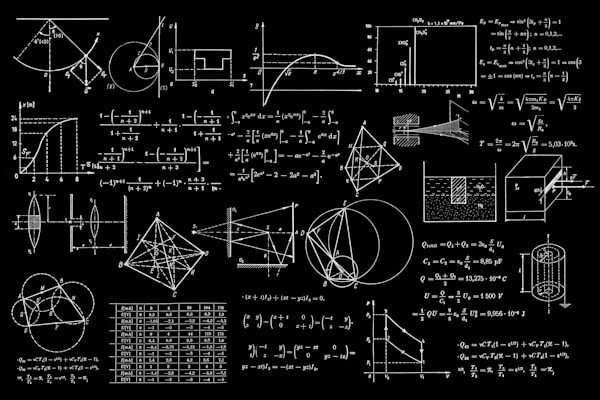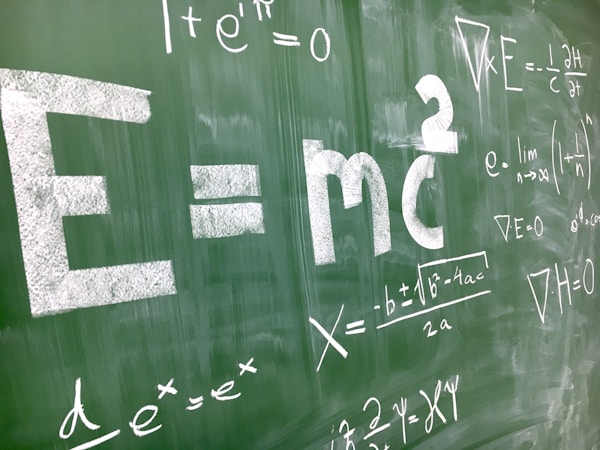The Quantum Beginning
Our universe began approximately 13.8 billion years ago in an event we call the Big Bang—an origin so extreme that space, time, matter, and energy all emerged from an initial state of unfathomable density and temperature. Understanding this origin requires quantum mechanics, for at the earliest moments, the entire observable universe was smaller than an atom, firmly in the quantum realm. Quantum cosmology attempts to apply quantum theory to the universe as a whole, addressing profound questions about cosmic origins, initial conditions, and the nature of time itself.
Classical Cosmology and Its Limits
Einstein's general relativity, formulated in 1915, revolutionized our understanding of gravity and cosmology. The Friedmann-Lemaître-Robertson-Walker (FLRW) metric describes homogeneous, isotropic universes evolving according to Einstein's field equations. These models successfully explain cosmic expansion, the cosmic microwave background, and nucleosynthesis of light elements.
However, classical cosmology encounters fundamental limitations. Tracing cosmic evolution backward in time leads to a singularity—a point where density, temperature, and spacetime curvature become infinite. At the Planck time (~10⁻⁴³ seconds) and Planck length (~10⁻³⁵ meters), quantum gravitational effects become crucial, and classical general relativity breaks down. To understand the universe's ultimate origin requires a quantum theory of gravity and spacetime.
The Wheeler-DeWitt Equation
The Wheeler-DeWitt equation, proposed by John Wheeler and Bryce DeWitt in the 1960s, represents a pioneering attempt to quantize general relativity and describe the quantum state of the universe. It's essentially a Schrödinger equation for the universe, where the wavefunction Ψ depends on the three-dimensional geometry of space rather than particle positions.
The equation takes the form: ĤΨ[hij,φ] = 0, where hij represents the three-dimensional spatial metric, φ represents matter fields, and Ĥ is the Hamiltonian constraint. Remarkably, this equation contains no time variable—a feature reflecting general relativity's background independence and raising profound questions about time's nature in quantum cosmology.
The absence of time in the Wheeler-DeWitt equation leads to the "problem of time" in quantum gravity. If the universe's quantum state doesn't evolve in time, how do we explain the manifest temporality of our experience? Various proposals address this: identifying emergent time from quantum correlations, using matter fields as internal clocks, or reconsidering time's fundamental status.
Quantum Fluctuations and Cosmic Inflation
Inflation, proposed by Alan Guth in 1980 and refined by many others, suggests the early universe underwent exponential expansion driven by vacuum energy. Originally conceived to solve classical cosmology problems (horizon, flatness, monopole problems), inflation's quantum aspects prove equally crucial.
During inflation, quantum vacuum fluctuations of scalar fields get stretched to cosmic scales, frozen as classical perturbations when their wavelengths exceed the Hubble radius. These quantum fluctuations seed all cosmic structure—galaxies, clusters, the cosmic web—and imprint patterns on the cosmic microwave background (CMB).
The CMB's temperature fluctuations, measured precisely by satellites like WMAP and Planck, match predictions from quantum fluctuations during inflation with remarkable accuracy. The nearly scale-invariant spectrum, slight red tilt, and Gaussian statistics all accord with simplest inflation models. These observations provide extraordinary evidence that quantum processes in the universe's first fraction of a second determined structure billions of years later.
The Hartle-Hawking No-Boundary Proposal
How did the universe begin? James Hartle and Stephen Hawking proposed the "no-boundary" proposal in 1983, suggesting the universe's quantum state involves a sum over compact Euclidean four-geometries with no initial boundary. In this framework, asking what came "before" the Big Bang becomes meaningless—time itself has no boundary or beginning in a conventional sense.
Mathematically, this involves path integrals over Euclidean (imaginary time) geometries. The wavefunction of the universe is calculated by summing over all possible four-dimensional geometries matching current three-dimensional spatial geometry. Near the "beginning," time takes on space-like character, smoothly closing off without singularity—analogous to how Earth's surface has no boundary point (like a North Pole) yet is finite.
Alternative proposals exist. Alexander Vilenkin's "tunneling from nothing" suggests the universe tunneled quantum mechanically from a state with no space or time into classical spacetime. These proposals make different predictions about initial conditions and observable consequences, though definitively testing them remains challenging.
Quantum Fields in Curved Spacetime
Even without full quantum gravity, quantum field theory in curved spacetime yields profound insights. This semiclassical approach treats matter fields quantum mechanically while keeping spacetime classical. It successfully describes particle creation in gravitational fields, vacuum polarization effects, and renormalization of stress-energy tensors.
Hawking radiation exemplifies this approach's power. Quantum field theory near black hole event horizons predicts thermal radiation emission, with temperature inversely proportional to black hole mass. Though tiny for stellar-mass black holes, this effect proves primordial black holes (if they exist) could have evaporated by now, potentially observable through gamma-ray bursts.
Similar effects occur during inflation. The accelerated expansion creates particle pairs from vacuum fluctuations. The inflaton field's quantum fluctuations during inflation become real particles after inflation ends, reheating the universe and providing energy density to form all matter and radiation we observe today.
Loop Quantum Cosmology
Loop quantum gravity (LQG), a candidate quantum gravity theory, applies to cosmology through loop quantum cosmology (LQC). Unlike the Wheeler-DeWitt approach, LQC incorporates LQG's prediction that spacetime has discrete quantum structure at the Planck scale.
A key LQC prediction is the Big Bang singularity's resolution. Quantum geometric effects create a repulsive force at extreme densities, bouncing the universe from a previous contracting phase into the current expanding phase—a "Big Bounce" rather than a Big Bang. The singularity disappears, replaced by a quantum bridge connecting two classical spacetime regions.
LQC makes predictions about primordial perturbations potentially distinguishable from standard inflation. Observations of the CMB power spectrum at large angular scales might reveal signatures of quantum gravitational effects during the bounce, though current data don't definitively confirm or exclude these scenarios.
Eternal Inflation and the Multiverse
Many inflation models exhibit eternal inflation: quantum fluctuations can locally increase the inflaton field faster than classical rolling decreases it. This creates eternally inflating regions spawning infinite "pocket universes" with varying properties—a multiverse.
In this scenario, our observable universe is one patch where inflation ended and reheating occurred, but vast regions continue inflating forever. Different pockets might have different physical constants, particle spectra, even different effective laws of physics, depending on how symmetries break during their respective reheating phases.
The multiverse raises profound questions about predictability and explanation in physics. If all possible outcomes occur somewhere in an infinite multiverse, what does it mean to predict observations? Anthropic reasoning—that we observe conditions compatible with our existence—becomes relevant but controversial. These debates touch on fundamental questions about science's nature and limitations.
Observational Tests and Constraints
Several observational programs probe quantum cosmology predictions. CMB observations characterize primordial perturbations with unprecedented precision, constraining inflation models. Measurements of primordial gravitational waves (through B-mode polarization) would confirm inflation's quantum field-theoretic nature and constrain energy scales.
Large-scale structure surveys map matter distribution across cosmic history, testing predictions about perturbation growth and dark matter properties. Observations of primordial black holes, if discovered, could reveal early universe conditions. Precision measurements of cosmological parameters—Hubble constant, matter density, dark energy equation of state—constrain theoretical models.
Future observatories—next-generation CMB satellites, gravitational wave detectors sensitive to primordial waves, improved large-scale structure surveys—will further test quantum cosmology predictions, potentially revealing signatures of quantum gravitational physics from the universe's first moments.
Philosophical and Conceptual Implications
Quantum cosmology confronts deep philosophical questions. What does "wavefunction of the universe" mean when there's no external observer? How do probabilities work for unique, non-repeatable events like cosmic origins? Can the universe "tunnel from nothing," and what is "nothing" in this context?
The problem of time challenges conventional physics assumptions about time's role. If fundamental quantum cosmology involves timeless equations, temporal experience must emerge from quantum correlations among subsystems—consciousness perceiving time might arise from entanglement patterns rather than fundamental temporal flow.
These questions bridge physics and philosophy, engaging issues about explanation, causation, and reality's nature. They remind us that understanding cosmic origins isn't merely technical calculation but touches humanity's deepest questions about existence and our place in the cosmos.
Conclusion
Quantum cosmology represents physics' most ambitious application—applying quantum theory to the universe as a whole, including spacetime itself. While full quantum gravity remains elusive, substantial progress illuminates early universe physics, cosmic origins, and the quantum-to-classical transition.
The success of inflationary cosmology, supported by CMB observations showing quantum fluctuations grown to cosmic scales, demonstrates quantum processes shaped the universe's large-scale structure. The Wheeler-DeWitt equation, though incompletely solved, frames questions about quantum spacetime. Loop quantum cosmology suggests singularity resolution through quantum geometric effects.
Major challenges remain: constructing complete quantum gravity theories, solving the Wheeler-DeWitt equation for realistic models, understanding time's emergence, testing predictions observationally. Yet progress continues, driven by improved observations and theoretical insights.
Ultimately, quantum cosmology seeks nothing less than understanding existence's origin—how something emerged from nothing (or from quantum uncertainty), how classical spacetime crystallized from quantum foam, how the universe's initial conditions were set. These profound questions, once purely philosophical, increasingly admit scientific investigation. The quantum nature of cosmic origins transforms from speculation to tested physical theory, revealing the universe's deepest secrets encoded in its earliest moments.

